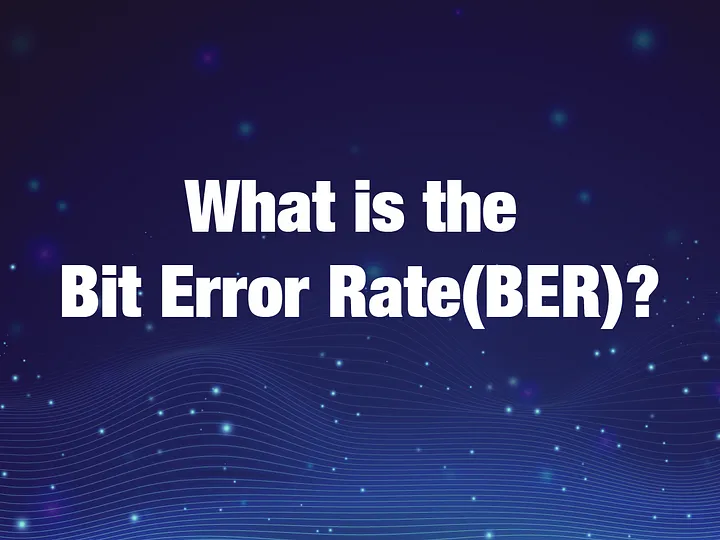What is the Bit Error Rate(BER)?
The Bit Error Rate (BER) is a metric used to measure the rate of bit transmission errors in digital communication systems. It represents the ratio of the number of erroneous bits received during transmission over a certain period to the total number of bits received during the same time. It is typically expressed as a percentage or in exponential form, for example, 1E-6 indicates one error bit in every one million transmitted bits.

The BER directly relates to the reliability and performance of digital communication systems. A lower BER signifies more reliable transmission, while a higher BER indicates poorer transmission quality, potentially leading to data loss or transmission errors.
In digital communication systems, BER can be measured by sending a known bit sequence and then comparing the received bit sequence with the transmitted one at the receiving end. By counting the number of error bits, the BER can be calculated.
The target value for BER often depends on specific application scenarios and system requirements. In high-speed optical fiber communication systems, a very low BER is typically required, such as 1E-12 or lower. In certain wireless communication systems, a higher BER may be tolerated, such as 1E-5.
To reduce BER, digital communication systems often employ a range of techniques and methods, including channel coding, modulation, equalization, and error correction. These technologies enhance signal robustness and fault tolerance, thereby reducing the transmission error rate.
Several factors influence the Bit Error Rate (BER), including:
1. Channel Noise: Channel noise refers to random noise introduced during signal transmission. Higher levels of noise lead to higher BER.
2. Signal Power: Lower signal power results in greater susceptibility to noise, leading to higher BER.
3. Transmission Distance: Longer transmission distances increase signal attenuation and distortion, contributing to a higher BER.
4. Signal Modulation Scheme: Different modulation schemes exhibit varying noise resistance. Some schemes (e.g., QAM) have lower BER in high signal-to-noise conditions, while others (e.g., ASK) may perform better in low signal-to-noise conditions.
5. Channel Distortion: Channel distortion includes multipath effects, frequency-selective fading, and phase offsets. These distortions introduce interference and errors, leading to higher BER.
6. Intersymbol Interference: Intersymbol interference refers to mutual interference between adjacent bits. Higher intersymbol interference leads to a higher BER.
7. Signal Modulation Rate: Higher modulation rates imply shorter bit durations, imposing stricter requirements on the transmission channel, potentially resulting in higher BER.
8. Data Rate: Higher data rates may increase interference between bits, leading to higher BER.
9. System Design and Implementation: Factors such as system design and implementation quality, error correction, and detection mechanisms also influence BER.
In conclusion, Bit Error Rate (BER) is influenced by multiple factors, including channel noise, signal power, transmission distance, signal modulation scheme, channel distortion, intersymbol interference, signal modulation rate, data rate, and system design and implementation. In practical applications, these factors need to be carefully considered, and appropriate technical means should be employed to minimize BER.

